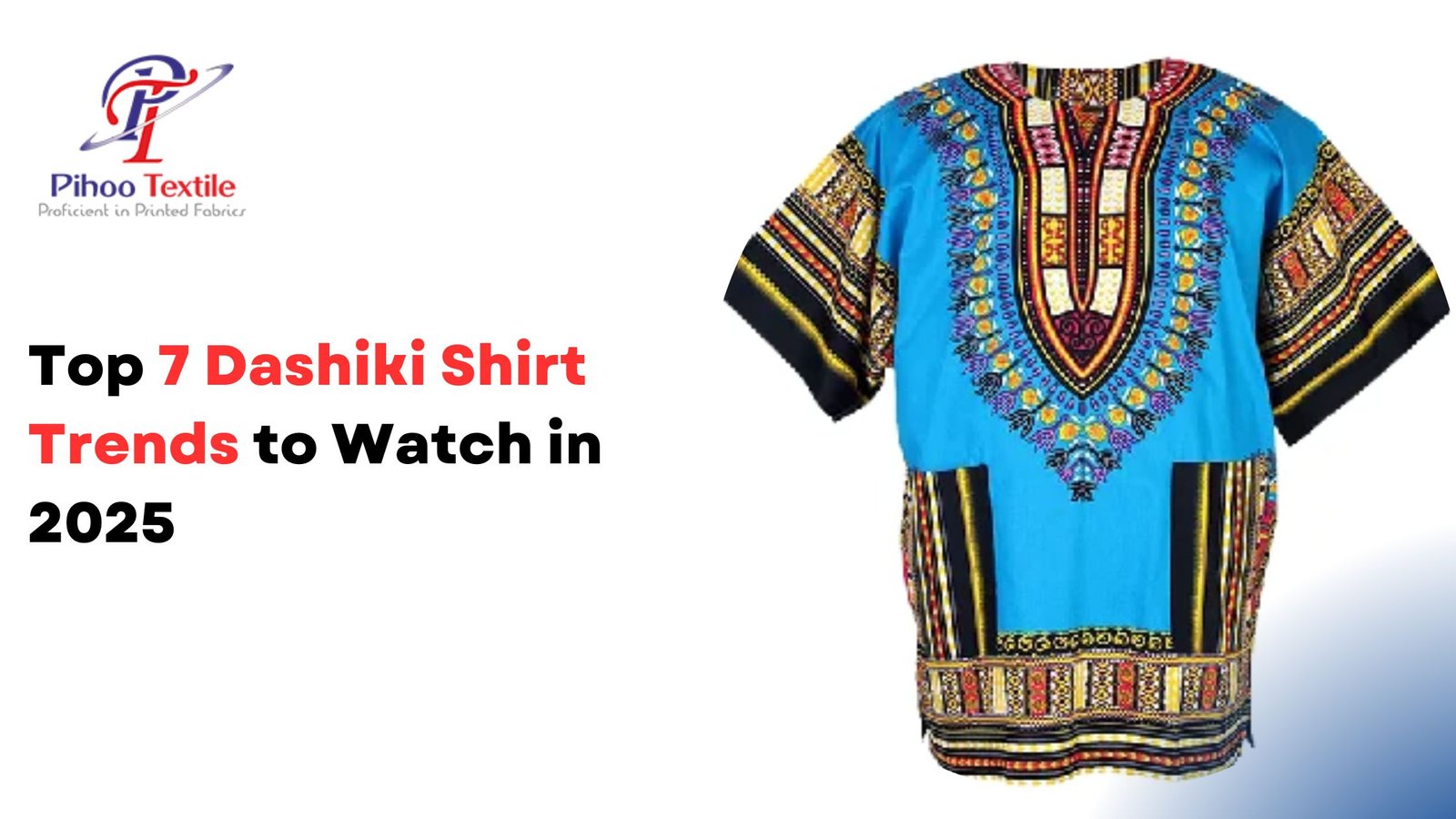Top 7 Dashiki Shirt Trends to Watch in 2025
Step into 2025, and the dashiki is no longer just a symbol of African heritage—it’s a global fashion phenomenon, reimagined for a new era of cultural pride and creative innovation. The dashiki’s journey from the streets of Accra and Lagos to the runways of Paris and New York is a story of resilience, adaptation, and reinvention. As one designer put it, “The dashiki is not just a shirt; it’s a canvas where history, identity, and imagination meet.” This year, the dashiki is at the crossroads of tradition and technology, sustainability and self-expression, ready to surprise even the most seasoned fashion entrepreneurs.
The Foundation: What Makes a Dashiki Timeless
The dashiki’s enduring appeal lies in its unmistakable silhouette and vibrant prints, but its roots run much deeper. Originating in West Africa, the dashiki was traditionally worn as a loose, flowing garment—ideal for hot climates and communal gatherings. Its bold patterns, often featuring intricate embroidery and symbolic motifs, communicate stories of lineage, status, and spirituality.
In 2025, these foundational elements remain at the heart of every trend. As one textile historian notes, “The dashiki’s cut is a masterclass in comfort and versatility, while its patterns are a living archive of African artistry.” This dual legacy—function and meaning—makes the dashiki uniquely adaptable to changing tastes and technologies. The modern dashiki, whether tailored for a boardroom or festival, retains this DNA, ensuring that every new trend is anchored in authenticity.
Sustainability and Eco-Conscious Fabrics in Dashiki Fashion
Sustainability isn’t just a buzzword—it’s a revolution reshaping the very fabric of dashiki production. In 2025, eco-conscious entrepreneurs are driving demand for organic cotton, bamboo blends, and recycled polyester. According to industry reports, over 60% of new dashiki collections now feature at least one sustainable fabric, a leap from just 18% in 2020.
One expert explains, “The new generation of consumers wants style with a conscience. They’re asking not only how a dashiki looks, but how it’s made.” Brands are responding with transparent sourcing, water-saving dye techniques, and biodegradable packaging. Even traditional wax prints are getting a green makeover, with natural dyes and solar-powered printing presses. For those eager to deepen their understanding, our guide “How to Identify High-Quality African Print Fabric” explores the nuances of sustainable textiles and what sets premium dashikis apart.
Vibrant Colorways and Bold Prints: 2025’s Palette
If 2024 was the year of subtlety, 2025 is an explosion of color and pattern. This season’s dashikis are defined by electric blues, fiery oranges, and radiant purples, often layered in complex geometric or nature-inspired motifs. Designers are drawing inspiration from both classic tribal patterns and contemporary art, creating prints that are as much statement pieces as they are garments.
Retro influences are making a comeback, with 70s psychedelia and 90s minimalism colliding in unexpected ways. One trend forecaster describes it as “a visual dialogue between past and future, where every print tells a story.” Advances in digital printing have unlocked new possibilities, allowing for hyper-detailed designs and color gradients that were previously impossible. For entrepreneurs, understanding these shifts is crucial—bold prints are not just aesthetic choices but strategic differentiators in a crowded market.
Fusion Styles: Blending Tradition with Contemporary Silhouettes
The dashiki’s versatility shines brightest in its fusion with modern tailoring. In 2025, expect to see dashikis with asymmetrical hems, cropped lengths, and even tailored blazers featuring dashiki panels. This hybridization isn’t just about aesthetics—it’s a response to the globalized wardrobe, where consumers crave pieces that transition seamlessly from day to night, work to play.
Fashion insiders note, “The most successful dashiki collections this year are those that honor tradition while pushing the boundaries of form.” Think dashiki-inspired bomber jackets, wrap dresses, and even athleisure sets. These innovations are powered by close collaboration between African artisans and international designers, ensuring that the dashiki remains both rooted and relevant. For a deeper dive into the technical side, our post on “Latest ISO 105 Colorfastness Standards for Printed Fabrics” highlights how modern finishing techniques are enhancing durability and vibrancy in these new silhouettes.
Minimalism Meets Heritage: Subtle Embellishments and Clean Lines
Not every trend in 2025 is about maximalism. A parallel movement is gaining traction: minimalist dashikis that celebrate the beauty of restraint. These designs feature monochromatic palettes, subtle embroidery, and clean, architectural lines. The focus shifts from bold prints to impeccable craftsmanship—think hand-finished seams, precision tailoring, and innovative fabric blends.
This trend is particularly resonant among younger consumers and urban professionals who want to honor their heritage without compromising on a sleek, modern aesthetic. As one stylist observes, “Minimalist dashikis are proof that less can be more—each detail is deliberate, each stitch a statement.” For entrepreneurs, this is an opportunity to cater to a discerning clientele that values both tradition and sophistication.
The Rise of Gender-Neutral and Adaptive Dashiki Designs
Inclusivity is at the heart of 2025’s dashiki trends. Designers are moving beyond binary sizing and gendered cuts, embracing fluid silhouettes that work for all bodies. Adaptive features—like magnetic closures, adjustable hems, and sensory-friendly fabrics—are making dashikis accessible to people of all abilities.
A leading advocate for adaptive fashion shares, “The dashiki’s inherent looseness makes it a perfect candidate for universal design. By rethinking closures and fits, we’re making fashion truly democratic.” This shift is more than a trend; it’s a movement toward equity and representation. For entrepreneurs, investing in inclusive design is both a moral imperative and a smart business strategy, opening doors to underserved markets.
Technological Innovations in Textile Printing and Fabrication
2025 is the year where tradition meets technology in the dashiki world. Digital textile printing, AI-assisted design, and 3D weaving are revolutionizing how dashikis are conceived and produced. These innovations allow for intricate, customizable patterns, faster turnaround times, and reduced environmental impact.
One textile technologist enthuses, “We’re seeing dashikis with colorfastness and print clarity that were unimaginable just a few years ago. Technology is amplifying the artistry, not replacing it.” Smart fabrics—infused with temperature-regulating or UV-protective properties—are also making their way into premium collections. For entrepreneurs, leveraging these advancements means staying ahead of the curve and offering products that marry heritage with high performance.
Pihoo Textiles’ Vision: Shaping the Future of Dashiki Trends
At the forefront of these trends stands Pihoo Textiles, committed to blending tradition, innovation, and sustainability. The company’s 2025 dashiki line is a testament to this ethos: eco-friendly fabrics, vibrant digital prints, and inclusive sizing define the collection. Pihoo’s partnerships with African artisans ensure that every piece tells a story of craftsmanship and community, while investments in cutting-edge printing technology guarantee unmatched quality and durability.
As Pihoo’s creative director puts it, “We’re not just making dashikis—we’re shaping the narrative of what African-inspired fashion can be in a global context.” For entrepreneurs, collaborating with Pihoo Textiles means access to a supply chain that values transparency, creativity, and impact. The company’s ongoing research into sustainable dyes and adaptive design is setting new industry standards, ensuring that the dashiki’s future is as bright as its past.
Conclusion: Embracing the Dashiki Revolution in 2025
The dashiki’s evolution in 2025 is a masterclass in how heritage and innovation can coexist, each enriching the other. From eco-conscious fabrics and bold prints to inclusive designs and technological breakthroughs, this year’s trends are rewriting the rules of what the dashiki can be. For starter entrepreneurs, the message is clear: the dashiki is more than a garment—it’s a movement, an opportunity, and a legacy waiting to be shaped.
As you chart your path in the world of African-inspired fashion, remember that every dashiki you create or sell is part of a larger story—one that honors the past, embraces the present, and dares to imagine the future. Dive deeper into the art of fabric selection with “How to Identify High-Quality African Print Fabric,” and stay ahead of the curve with insights from “Latest ISO 105 Colorfastness Standards for Printed Fabrics.” The dashiki revolution is here—will you be a part of it?


